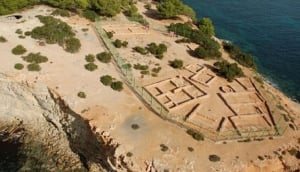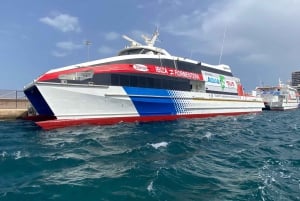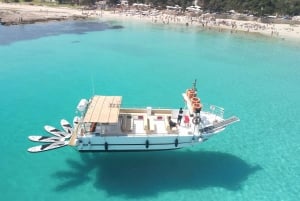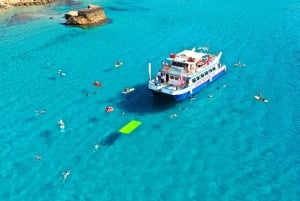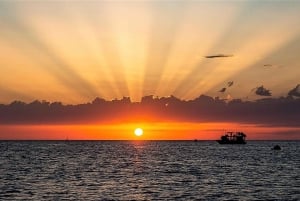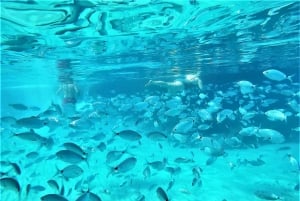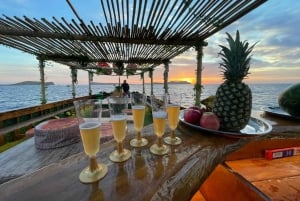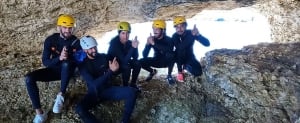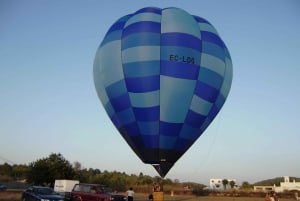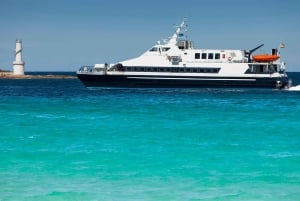The UNESCO Attractions in Ibiza
Spain is the European country with the most World Heritage Sites...
Book Top Experiences and Tours in Ibiza:
If youʻre booking your trip to Ibiza last minute, we have you covered. Below are some of the top tours and experiences!- From Ibiza: Same-Day 2-Way Ferry Ticket to Formentera
- San Antonio: Cala Bassa, Cala Conta and Cave Boat Trip
- Ibiza: Beach Hopping Cruise w/ Paddleboard, Food, & Drinks
- Ibiza: Snorkeling, Sunset Beach and Cave Boat Trip
- Ibiza: Snorkeling and SUP Paddle, Beach and Cave Tour
UNESCO is the United Nations Educational, Scientific & Cultural Organization and its mission is to "contribute to the building of peace, the eradication of poverty, sustainable development and intercultural dialogue through education, the sciences, culture, communication and information."
Many people think of Ibiza as being synonymous with partying and, in many ways, it is! The Ibiza clubs are great fun, don´t get me wrong, but if you can fight off the hangover for even just one afternoon, you may be pleasantly surprised at what else there is on offer. There are other sides to this beautiful island, and we don´t just mean the beaches! If we have any say in the matter, we highly recommend adding a spot of Ibiza culture to your visit! In recent years, the flocks of tourists that we receive every summer have expanded to include culture, countryside & sport loving groups. This is mainly due to the fact that Spain is the European country with the most World Heritage Sites, and Ibiza was declared a World Heritage Site by the UNESCO on the 4th of December 1999. What exactly is a World Heritage Site? It is a place such as a forest, mountain, lake, desert, monument, building, complex, or city of outstanding cultural or natural importance to the common heritage of humanity. These sites are catalogued & named and UNESCO considers it in the interest of the international community to preserve each and every one of them.
Four main Ibiza attractions/areas were entered under the UNESCO protection and can all be easily visited:
Dalt Vila
Dalt Vila is the old town of Ibiza and is a monument to history. Over the years Ibiza has been home to a number of different cultures, all of which left a new layer of superimposed traces, from the first inhabitants of the bay area, through the Phoenicians, Carthaginians, Romans and Muslims, to the Catalan conquest at the hands of the Kingdom of Aragon in the thirteenth century. There are five entrances to Dalt Vila, the main one being the Portal de Ses Taules (with a Roman statue replica on either side), better known to us as the ramp.
There are tours that can be joined, or just take a walk up through the walls of the old town, admiring the architecture and views along the way. Dalt Vila comes alive at night with bars, restaurants & shops too.

Posidonia
Posidonia is the name given to the underwater prairies of the Balearic Islands; vast areas of seaweed, rich in marine biodiversity, in the Ses Salines Nature Reserve. The crystal clear waters that surround Ibiza are so beautifully transparent due to these underwater meadows, endemic to the Mediterranean. The preservation of the Posidonia is therefore imperative or we will all end up swimming in murky, dirty waters with very little marine life.
Posidonia can be seen any time you swim out to deeper waters or when you jump off a boat. When you wonder to yourself why the sea is so dark, this is because the seabed is covered with this seaweed and the golden sand cannot be seen.

Necropolis at Puig des Molins - Phoenician/Punic
The Puig des Molins is an area in Ibiza town that has been a cemetery throughout the ages. It was named after the existence of windmills on the top of the hill, built in the 15th century. Remnants are still visible but the windmills are not in use. At only 500m from the Phoenician town, Puig de Vila, founded in the XII century BC, all that separates the two is a valley which is now the street named Joan Xicó. Somewhere between 4 and 5 thousand hypogeum (underground tombs) have been found here, about 340 of which can be visited. Puig des Molins is home to the world´s largest collection of Punic artefacts. Puig Des Molins can be easily reached on foot from the centre of Ibiza town and there are cultural tours every couple of weeks.

Sa Caleta - Phoenician Settlement
The settlement of Sa Caleta is said to be due to a system based on the juxtaposition of rooms, without any order as to the orientation between, or in relation to the cardinal points. It seems as though the land was divided among the settlers, who then built different areas, with only a few metres in between, forming independent units from an architectural point of view.
This settlement is just minutes from the Es Bol Nou beach, more commonly known as Sa Caleta, so if you love history and beaches, pack a picnic and make a day of it!
So now you know, take a night off from partying and spend the day (with sunglasses on if necessary!) learning a little about culture in general and a lot about Ibiza in particular. If you need a hand organising a tour, the My Guide Ibiza Team is more than happy to help.
For a comprehensive guide to everything Ibiza, please pay us a visit at .



